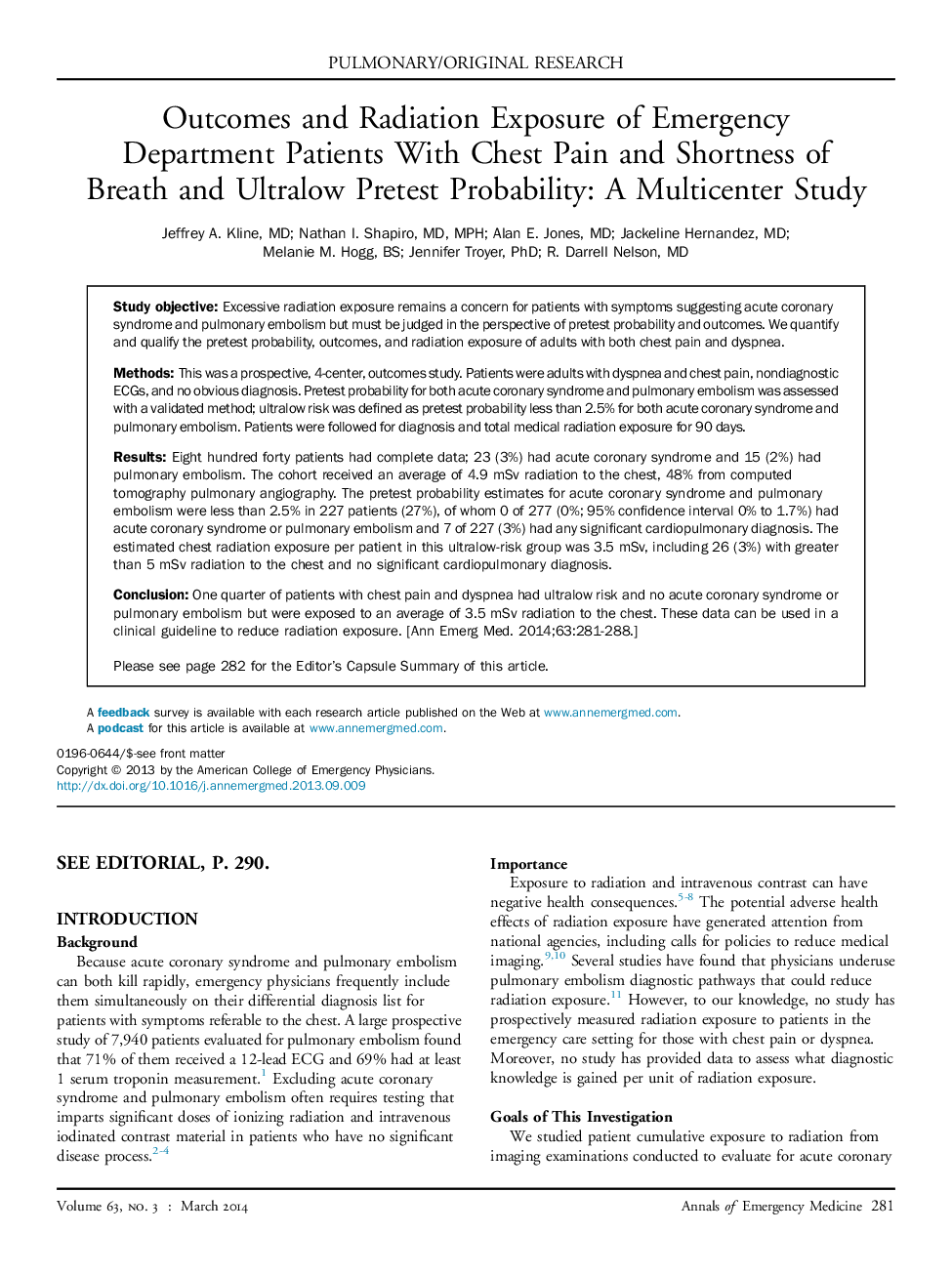| Article ID | Journal | Published Year | Pages | File Type |
|---|---|---|---|---|
| 3229583 | Annals of Emergency Medicine | 2014 | 8 Pages |
Study objectiveExcessive radiation exposure remains a concern for patients with symptoms suggesting acute coronary syndrome and pulmonary embolism but must be judged in the perspective of pretest probability and outcomes. We quantify and qualify the pretest probability, outcomes, and radiation exposure of adults with both chest pain and dyspnea.MethodsThis was a prospective, 4-center, outcomes study. Patients were adults with dyspnea and chest pain, nondiagnostic ECGs, and no obvious diagnosis. Pretest probability for both acute coronary syndrome and pulmonary embolism was assessed with a validated method; ultralow risk was defined as pretest probability less than 2.5% for both acute coronary syndrome and pulmonary embolism. Patients were followed for diagnosis and total medical radiation exposure for 90 days.ResultsEight hundred forty patients had complete data; 23 (3%) had acute coronary syndrome and 15 (2%) had pulmonary embolism. The cohort received an average of 4.9 mSv radiation to the chest, 48% from computed tomography pulmonary angiography. The pretest probability estimates for acute coronary syndrome and pulmonary embolism were less than 2.5% in 227 patients (27%), of whom 0 of 277 (0%; 95% confidence interval 0% to 1.7%) had acute coronary syndrome or pulmonary embolism and 7 of 227 (3%) had any significant cardiopulmonary diagnosis. The estimated chest radiation exposure per patient in this ultralow-risk group was 3.5 mSv, including 26 (3%) with greater than 5 mSv radiation to the chest and no significant cardiopulmonary diagnosis.ConclusionOne quarter of patients with chest pain and dyspnea had ultralow risk and no acute coronary syndrome or pulmonary embolism but were exposed to an average of 3.5 mSv radiation to the chest. These data can be used in a clinical guideline to reduce radiation exposure.
